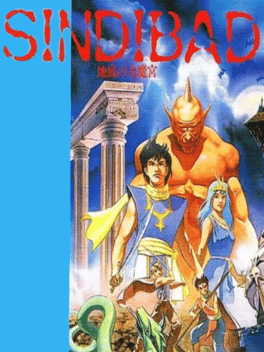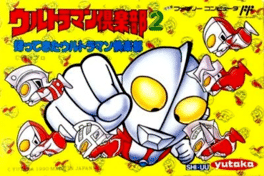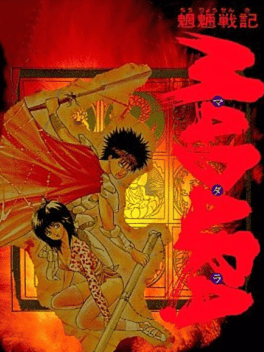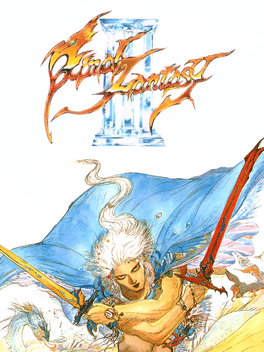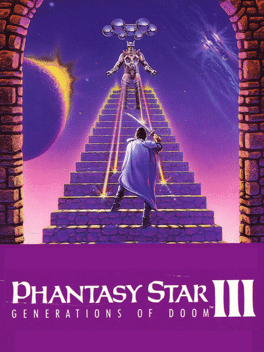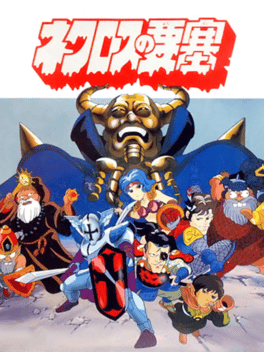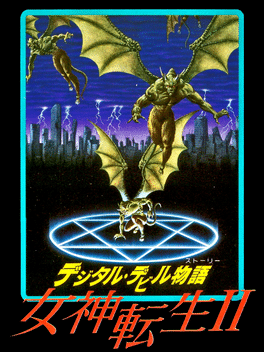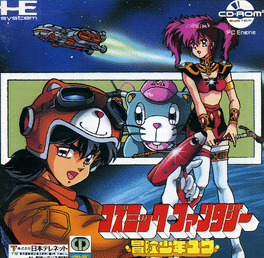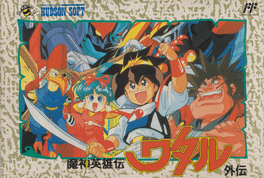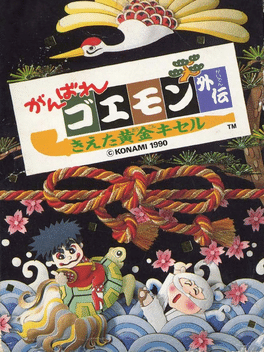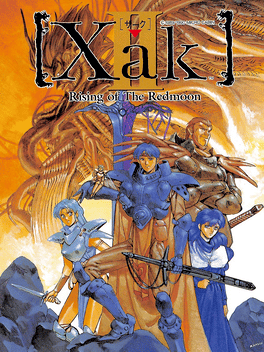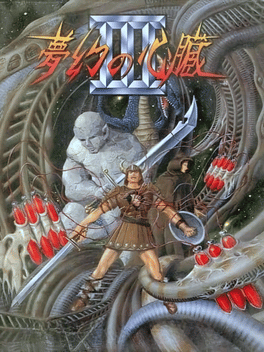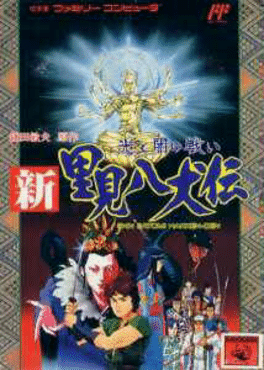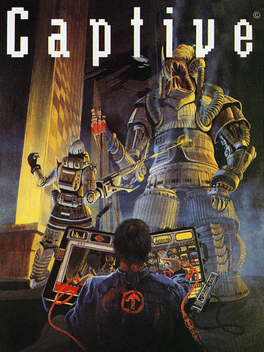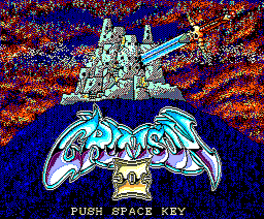New Xbox 360 Games - Page 235
-
Ultima VI: The False Prophet
1990
PC-9800 Series Sharp X68000 Commodore C64/128/MAX Super Nintendo Entertainment System Atari ST/STE DOS FM Towns Amiga Super Famicomstar 8.4Ultima VI sees the player return to Britannia, at war with a race of gargoyles from another land, struggling to stop a prophecy from ending their race. The player must help defend Britannia against these gargoyles, and ultimately discover the secrets about both lands and its peoples. -
Ultraman Club 2: Kaette Kita Ultraman Club
1990
Ultraman Club 2: Kaette Kita Ultraman Club is a Role-Playing game, developed by Interlink and published by Bandai, which was released in Japan in 1990. -
Mouryou Senki Madara
1990
Mouryou Senki Madara
1990
Mouryou Senki Madara is a Role-Playing game, developed and published by Konami, which was released in Japan in 1990. -
Final Fantasy III
1990
Final Fantasy III
1990
star 6.6Final Fantasy III is the third FF game for the Famicom. The turn-based battle engine has been improved: if the enemy is defeated, the next character will automatically switch to another enemy, and not hit the air, like in the previous two games. The game itself is, like the previous games, a top-down RPG where your characters travel in the overworld, sometimes entering cities and dungeons to buy equipment, rest and fight random encounters and bosses with turn-based combat. Final Fantasy III also introduces various series staples, such as the Job system and the Moogle species. -
Majin Eiyuu-den Wataru Gaiden
1990
Majin Eiyuu-den Wataru Gaiden is a Role-Playing game, developed by West One and published by Hudson Soft, which was released in Japan in 1990. -
Sansara Naga
1990
Sansara Naga
1990
Sansara Naga is a role-playing video game that was published by Victor Music Entertainment exclusively to Japan for the Family Computer on the 23rd of March, 1990. A fan-translation was finished and released in 2013 on the 28th of December for Sansara Naga by the hacking and translation group Stardust Crusaders. Sansara Naga is set in the fantasy-filled lands of India during the Vedic age and also mixes elements of Japanese folklore such as the legend of Brahman Umibouzu ("sea bonze"). Many of the NPCs in game will tell you that Cows are sacred animals and a few will mention the Tower of Ṛta Satya. There is a set of armor in the game called Dharma Armor, which will prevent the player from dealing or being dealt damage. The story revolves around a Boy/Girl that steals a treasured Ostrich egg from the village of Orissa and decides to reflect upon one's actions; aspiring to become a Dragoon to restore their lost honor. The protagonist will set out on an adventure saving lives, performing good deeds, and raising a -
Phantasy Star III: Generations of Doom
1990
star 7.7Just as you’re about to marry Maia, the mysterious woman you found on the shore, a winged dragon grabs her and disappears. This is the tragic start of what seems like a never-ending journey into a world of loathsome creatures and wicked souls that spans three generations. -
Necross No Yousai
1990
-
Digital Devil Story: Megami Tensei II
1990
Digital Devil Story: Megami Tensei II is the sequel to Digital Devil Story: Megami Tensei. It was published by Namco in 1990 for the Family Computer and is the second video game in the Megami Tensei series. This is the first game in the series to not be based on the original novels by Aya Nishitani, but it retains much of the gameplay aspects of its predecessor. The music in the game is enhanced by an eight-channel Namco 163 WSG sound chip on the cartridge. -
Burai: Joken
1990
-
Cosmic Fantasy: Bouken Shounen Yuu
1990
One of the first Japanese RPGs in a CD format, Cosmic Fantasy: Bouken Shounen Yuu is a traditional representative of its genre, with party management, dungeon exploration, random enemy encounters, and turn-based combat. Characters fight using physical attacks, but later gain access to psychic techniques, which are equivalent to magic spells in comparable games. There are anime-style cutscenes with voice acting which advance the story. -
Mashin Eiyuuden Wataru Gaiden
1990
A Japanese RPG based off the long running anime television series, "Mashin Hero Wataru." -
Ganbare Goemon Gaiden: Kieta Ougon Kiseru
1990
Ganbare Goemon Gaiden: Kieta Ougon Kiseru is a Role-Playing game, developed and published by Konami, which was released in Japan in 1990. -
Xak II: Rising of the Redmoon
1990
Xak II: Rising of the Redmoon is a Role-Playing game, developed and published by Micro Cabin, which was released in Japan in 1991. -
Mugen no Shinzou III
1990
Mugen no Shinzou III
1990
Mugen no Shinzou III is a Role-Playing game, developed and published by XTALSOFT, which was released in Japan in 1990. -
Shin Satomi Hakkenden: Hikari to Yami no Tatakai
1990
Shin Satomi Hakkenden: Hikari to Yami no Tatakai is a Role-Playing game, developed by Micronics and published by Toei Animation, which was released in Japan in 1989. -
Tao - The Way
1990
Tao - The Way
1990
Tao (lit. "Way" or "Road") is an RPG from Pax Softnica, which worked with Nintendo on games like Mother, and Vap, the publishers behind the infamous Ganso Saiyuuki: Super Monkey Daibouken. The game concerns a spiritual wanderer who is attempting to avert the end of days predicted by Nostradamus in a near future which has already been wracked with disaster. In order to do this, he must invoke the powers of various different religions and belief systems, including those from Hindu, Buddhist, Christianity and other faiths. The game is known for its abstract and unusual personality. A Sci-fi mystical RPG set in a post apocalyptic world, where a young man unravels a mystery regarding his origins and attempts to thwart an Nostradamus-tinged apocalypse that begins as a meteorite slams into his hometown. Find eight pieces of a trigram, 7 chakra statues and 7 amulets of the star lords in 7 mystic cities while fighting a cast of bizarre demons and gods! -
Captive
1990
Captive
1990
The quest for freedom! When you can't remember who you are, where you are, and even what year it is, then you know trouble cannot be to far away... Held Captive for two hundred years in an orbiting space prison for a crime you didn't commit, you are desperate to escape from your electronic jail. Armed only with a briefcase computer found in the corner of your cell, you start sending out SOS calls to the battling world outside. Eventually you find a motley crew of four droids ready to help bring about your escape. ...so begins your quest to freedom! -
Crimson II
1989
Crimson II
1989
Years have passed since the evil Crimson was defeated. Peace was restored, and humanity enjoyed an era of prosperity. But a new demonic being has arisen, ending the peace in the world. Five heroes must find each other and unite in order to vanquish him. The sequel to Crimson retains the basic gameplay of its predecessor and is a medieval-themed role-playing game with overhead exploration and first-person turn-based combat against randomly appearing enemies. The first part of the game is broken into chapters, each dedicated to one of the five heroes; afterwards, they are united as a party and continue the quest together, similarly to Dragon Quest IV.
